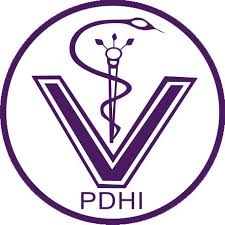Solasodine and Gosipol Effectivity as a Male Contraception Inhibit LH Expression and Spermatogenesis in Rat
Keywords:
Solasodine, Gosipol, LH, Spermatogenesis, AntifertilityAbstract
Rabies related to increasing canine population in Bali. Uncontrolled wild animal populations caused disease transmission from animal to human. Various attempt at population control are carried out such as the use of natural contraception. Some compounds are known to have potential as antifertility are solasodine and gosipol. Solasodine is known have an antifertility affect. Gosipol, fenolic compound in Ceiba pentandra, inhibits spermatogenesis, reduce sperm concentration, motility and viability. This research aims to compare effectiveness of terong cepoka and Ceiba pentandra as antifertility. This research was conducted at Mei-November 2018. Eight-teen rats were used in this study and divided into three groups: control, P1 extract Solanum torvum 1g/kg BW and P2 extract Ceiba pentandra 0,1g/kg BW PO. Rats were treated with extract for 10 days and euthanazed at day 11. Testis were collected for histopathology using HE staining to observe spermatogenesis and using immunohistochemistry to observe LH expression. The result are analyzed using one way ANOVA P<0.05. the result show that extract solanum torvum 1g/kg BW and ceiba pentandra 0,1g/kgBW cannot reduce spermatogenesis and LH expression. This study used crude extract which still consist any other compound like antioxidant. Future study we need use isolated and pure solasodine and gosipol.
References
Gadelha, ICN., NBS. Foncesa, SCS. Oloris, MM. Melo and B. Soto-Blanco. 2014. Gossypol Toxicity from Cottonseed Products.The Scientific World Journal.11, Article ID 231635.
Gupta, V.,CM. Krishna, P. Bansal, S. Kumar, GP. Prasad, and KDV. Ravi. 2010. Phytochemistry and Pharmacological Potential of Achyranthes Aspera-A. Review. International Journal of Ayurvedic Medicine. 1(1): 1-11.
Gupta, RS. and R. Sharma. 2006. A review on Medicine plants exhibiting antifertility activity in males. Natural Product Radiance. 5(5):389-410.
Hidayati, NLD. Dan T. Nofianti. 2014. Pengaruh Infusa Buah Terong cempoka terhadap Konsentrasi Spernatozoa Tikus Putih Jantan. Jurnal Kesehatan Bakti Tunas Husada. Vol. 12:1. 202-213.
Jayakumar K. and K. Murugan. 2016. Solanum Alkaloid and their Farmaceutical Roles: A Review. Journal of Analytical & Pharmaceutical Research.3:6
Kusriningrum. 2008. Dasar Perancangan Percobaan dan Rancangan Acak Lengkap. Surabaya. Airlangga University Press.
Santana, AT., M. Guelfi, HCD. Medeiros, MA. Tavares, PFV. Bizerra, and FE. Mingatto. 2015. Mechanism Involve in Reproductive Damage by Gossipol in Rats and Protective Effects of Vitamin E. Biologican Research. 48(1):43.
Sirait, N. 2009. Terong Cempoka (Solanum torvum) Herba yang Berkhasiat sebagai Obat. Warta Penelitian dan Pengembangan Tanaman Industri. Vol. 15:3, 10-12.
Kompas. 2018. Awas Ledakan Kucing. https://megapolitan.kompas.com/read/2014/05/05/2120338/ [Diakses 7 Mei 2018]
Downloads
Published
How to Cite
Issue
Section
License
Copyright (c) 2019 Desi Wulansari, Yudit Oktanella, Viski Fitri Hendrawan, Galuh Chandra Agustina

This work is licensed under a Creative Commons Attribution-NonCommercial 4.0 International License.













